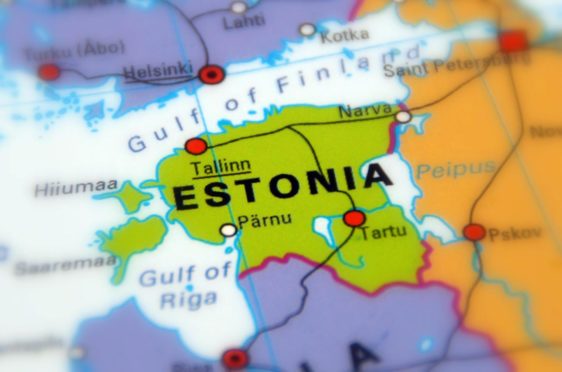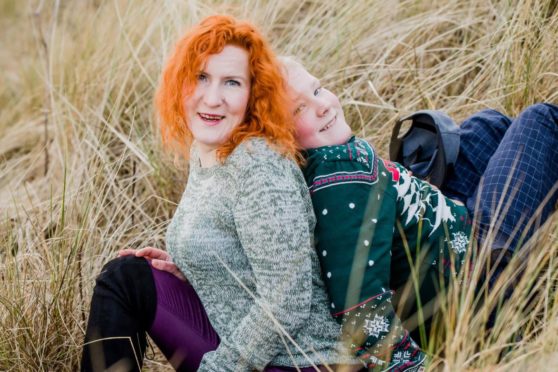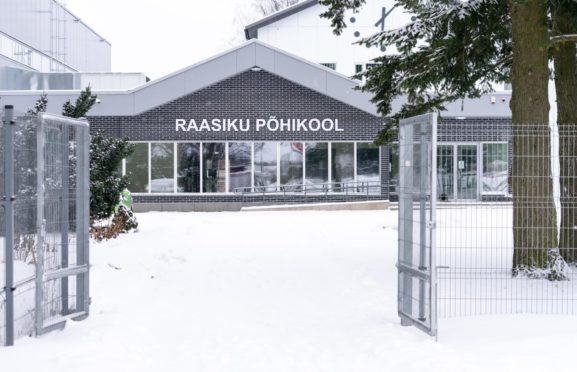Small country, big dreams.
With a population of just 1.3 million, Estonia has – officially – the best-performing education system in Europe.
The Baltic nation came out top in reading, maths and science in the latest Pisa rankings.
But what does Estonia do that we could perhaps follow?
We spoke to parents and educators about the system, and found out some big and small differences between the two nations.
Do high standards, very few private schools and a focus on vocations make the difference?
Estonia significantly outperforming Scotland
Education systems across the world are judged by the Pisa (Programme for International Student Assessment) tests, with results released every three years.
PISA measures 15-year-olds’ ability to use their reading, maths and science knowledge and skills to meet real-life challenges.
The tests are taken by pupils in 79 countries and regions worldwide.
Scotland recorded its worst-ever performance in maths and science in the most recent Pisa tests, ranked 25th and 24th among OECD nations.
Reading offered a rosier picture, with Scotland ranked above Wales and Northern Ireland, though slightly below England.
It achieved a mean score of 504 for reading (Estonia = 523); 489 for maths (Estonia = 523); and 490 for science (Estonia = 530).
Scotland’s education system came in for criticism in an OECD report in June, leading the Scottish Government to scrap the SQA.
Meanwhile, only China and Singapore scored better than Estonia’s education system in reading and science.

Why does Estonia’s education system consistently produce higher achieving school pupils?
And what can we learn from them?
Teacher autonomy, pupil freedom and high standards
The Press and Journal spoke to Estonian parents and teachers, Scottish expats living in Estonia, and the Estonian education ministry to find out.
Teacher autonomy and an emphasis on teaching to learn rather than for assessment came up a lot.
High standards, and giving pupils the freedom to have a say in their own learning, were also cited as reasons behind the country’s success.
Also mentioned were the irrelevance of socio-economic background, and a lack of chopping and changing education policy regardless of the party in power.
Birgit Lao is the Estonian Diplomatic Representative for Education, and reports to the education minister.
She said: “A lot comes from the education mindset.
“Learning and education is valued highly, regardless of socio-economic background.
“The system is very equal. Socio-economic background doesn’t matter.
“Whether you’re from a wealthy family or a poor family doesn’t affect the results you can achieve.
“Our philosophy is that the best school is the school nearest your home.
“It’s been proven statistically that the first six years of schooling doesn’t affect later learning.
“So the schools are very equal here, in terms of outcomes.”
More emphasis on learning than exams
Neil Mathieson, originally from Uddingston, has lived in Tallinn since 2005.
He has two sons, Artur, 14 and Alen, six, going through Estonia’s education system.
Artur attends a Russian language school where he receives a technical education, specialising in high calibre maths.
Alen goes to an Estonian language kindergarten where he is taught about nature and exposed to logic, especially through robotics.
Neil echoed Ms Lao’s point about equality and mindset, with a nod to the emphasis on high standards.
“As the country started from scratch 30 years ago, the socio-economic differences in Estonia are less pronounced than in Scotland,” he said.
“There are little to no private schooling options.
“And there’s an understanding that parents take some responsibility for educating their children.
“Learning is highly valued here. There is more emphasis on that than practising to pass exams.
“It’s a cultural thing. I see many people studying and reskilling into their 50s.
“The number and pressure of Estonian exams seems less compared to what we see in Scotland.
“The outcome of exams also has less effect.
“I have met many young people who performed averagely in school but are good at IT and able to pursue vocational or university qualifications alongside a paid job.”
‘Complaining is not welcomed’
He added: “There is a toughness here, which I like.
“You go to school whether or not it’s minus 20 outside, and the curriculum encourages high standards.
“Complaining is not welcomed.
“Resilience, plus a good technical education, plus experience with real-world applications appeals to me.
“If kids want ‘softer’ skills and approaches then no problem, they can go that route – arts are popular for example.
“But high standards help you throughout life.”
Birgit Itse, 40, moved from Estonia to Aberdeen two years ago.
She lives with her son Alan, 13, who goes to Bridge of Don Academy.
She cited school autonomy, high standards, and a desire to learn.
“A lot is expected of you as a pupil,” said Birgit.
“You’re expected to take part in after school activities.
“You’re expected to represent your school well, whether you’re doing sports or whatever it is.
“There are special competitions to show off your skills in maths, physics, chemistry, geography and so on. That can be at county or national level.
“The desire to learn is more important than grades.
“If you have the desire to learn, the grades will follow.”
Free meals and outdoor trips
She added: “Schools in Estonia have a lot of autonomy.
“So they can decide how the subjects are given.
“And what is also great is that there are a lot of informal learning events.
“If they go on excursions, that is government funded.
“So even if you don’t have money, that kid can still go.
“There are a lot of such trips, especially in spring and autumn. It’s part of the curriculum.
“Another thing I like about the Estonian school system is free school lunches, not just sandwiches but warm, freshly made food, for all kids until 16 years old.
“Kids get a proper meal, and no parent has to pay.”
So what does an Estonian school day look like?
Typically, the day begins at 8am or 9am, finishing at 2pm or 3pm.
There are then after school activities – such as sport – until around 5pm, with homework generally done after dinner.
Hourly breaks
As with neighbours Finland, Estonian pupils enjoy a 10 to 15-minute break for every 45 minutes of work.
Although Alan is enjoying life at school in Scotland, he said he missed the regular breaks.
“It allowed you to relax your mind,” he said.
“So you wouldn’t have thoughts from the last lesson bothering you, and you could start the next lesson with a clear mind.”
Getter Kallas is head of teaching at Rocca al mare School in Tallinn, which has pupils from pre-school up to secondary level.
She explained: “We start our day at 9am, and it starts with a conversation in the classroom: ‘How are you doing, what’s new, what’s this day going to look like, what are we going to do.’
“This takes about 15 minutes, and we call it the morning circle.
“Everyone leaves their home lives behind and focusses on learning.
“In our school we have a lesson plan, but students can make adjustments to this.
“Lessons last 45 minutes, or 90 minutes if it’s a double lesson.
“The teacher is guided by the idea that the lesson should be as informative and active as possible.
“Students are encouraged to get to know and learn about the topic independently, before class.
“This means everybody can partake in a conversation during the lesson.
“After each lesson there is a 10-minute break.
“Each day there are five or six lessons, rising to seven or eight in the upper stages.
“As the lessons are not so long, they also do independent assignments.
“The school day ends around 2pm – in the upper stages it’s around 3pm.”
Teacher autonomy vital
She emphasised the freedom enjoyed by both pupils and teachers.
“Teachers have autonomy in our country,” she said.
“All the schools are good because the teachers are qualified and they have the freedom to do what they think is right.
“Teacher autonomy goes hand in hand with teacher professionalism.
“Every year, teachers have the opportunity to participate in in-school training as well as to improve their skills elsewhere.”
‘They are motivated – they want to go to school’
She added: “I think the teacher role has changed over the last few years in Estonia.
“Twenty years ago, the teacher stood in front of the class and taught.
“Nowadays, we prefer the student to do the teaching, as well as the learning.
“Kids have more freedom.
“The teacher is like a mentor, they give guidance on what to learn and how to learn.
“The lesson plan is predetermined, but it is largely based on the principle of learning efficiency.
“We obviously have timetables for them, but within that they select what to learn from week to week.
“If the teacher is like a mentor, and the student takes on responsibility for their own learning, they achieve more.
“Now the knowledge the students get is more understandable, more reliable, and students want to know more.
“They are motivated. They want to go to school. And this is key.
“We also find that it stops students’ minds from wandering. It’s a bit like mindfulness.
“It’s not a case of the teacher telling them what to do all the time.
“The student has to focus all the time, they are the ones leading their own learning path.”
Reliance on tests a thing of the past
Learning for its own sake, rather than to pass a test, is also a key feature of Estonia’s success.
“In Estonia, we have passed this reliance on assessment,” said Ms Kallas.
“We used to have this teaching where the main goal was to pass a test.
“But now we are eager to give students the opportunity to solve problems.
“Before, the teacher was giving the knowledge.
“Now, students have to learn by themselves more.
“In maths, for example, we give students a problem, but we don’t tell them how to solve it.
“We give some hints, but they have to solve the problem.
“Therefore they have to pick up the formula themselves, and make it their own.
“The journey is more important than the end point.
“The end point, they’ll get there, but they have to learn the way there.
“They need to learn how to help themselves – without using Google!
“We want to reach a point where kids ask themselves why we learn something, why we need it, and how to figure it out.”
Alan Itse observed: “What I’ve noticed is that pupils in Estonia think very differently than pupils in Scotland.
“Here, you’d just get it done but in Estonia, they take their time to think a bit.”
No meddling from the state
From the government perspective, Ms Lao was adamant about the importance of moving power away from the state, towards teachers and pupils.
That, and the value of sticking to a policy without unnecessary meddling.
“There are no central restrictions or demands,” she said.
“How the state intervenes is it describes learning outcomes.
“But each and every school and kindergarten develops their own curriculum and methods on how to achieve these.
“This gives the flexibility to schools to choose how they teach, what they teach, what materials they use.
“Despite this autonomy, the outcomes are the same, there’s no differentiation between schools or regions.
“Flexibility and autonomy is risky from a state point of view. But it allows and enables innovation.
“It gives you many new approaches on how to solve problems at a school level.
“In 1996, we agreed on the new curriculum.
“We changed the system of assessment and exams.
“Those foundations have been there since then, we only adapted a little bit.
“We adapted the curriculum and teacher training early, and strongly, and stuck with it.
“If you push for skills and competences in the curriculum then on the side you can emphasise the importance of thinking – logical thinking, structural thinking.
“We perhaps evolved a little bit ahead of others in this.
“But we can see that the rest are catching up, Finland for example.”
She added: “From the state perspective, there is a pressure to have teacher salaries growing constantly.
“Politicians have taken this commitment, regardless of who is in power, and have worked to raise salaries.”
‘The meaning of assessment has to change’
And finally – exams.
Exams can strike terror into pupils and parents alike. Is that necessary?
“Final exams are ‘yesterday’,” said Ms Lao.
“Assessment happens while you browse learning materials.
“It happens when you read a chapter and we ask ‘what did you understand?’
“There’s so much more in assessment that we don’t really know.”
She said they are building a “personalised education data system” to see immediately whether students and teachers and schools are on track or not.
She added: “Assessment and the meaning of assessment has to change.
“We have to be more open about how assessment happens.
“Final exams cause a lot of stress for students whose lives depend on the result.
“Why don’t we recognise the whole journey, rather than the final two hours?”
More from the Schools and Family team
How can Scottish schools catch up with Finland?




